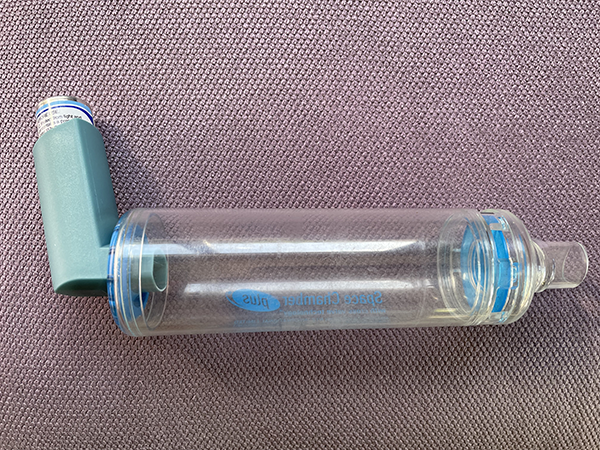Key points about asthma attacks
- any child with asthma can have a severe asthma attack
- tamariki with asthma have airways that are sensitive and react to certain triggers
- symptoms of an asthma attack include cough, wheezing and difficulty breathing
- ask your child's doctor for an asthma action plan to follow if they have an asthma attack
See the KidsHealth asthma page for more general information about the condition.
Signs and symptoms of an asthma attack
Many tamariki have only mild asthma. But any child with asthma can have a severe, life-threatening attack.
Asthma attacks happen when your child's asthma symptoms get worse. Symptoms can get worse over a few days, or quite suddenly.
Your child might experience the following symptoms.
Cough
Your child may get a cough. The cough can be worse at night or in the morning, or with exercise.
Wheezing
Wheezing is a musical, whistly sound that tamariki with asthma make, usually when breathing out. It can also happen when they breathe in. The sound comes from the chest, not from the nose or throat.
Difficulty breathing
Your child may feel short of breath - as though they can't get enough air out of their lungs.
They may be breathing fast. Your child may be too breathless to talk in full sentences.
They may be using extra muscles to breathe. You might see:
- sucking or pulling in under the ribcage
- sucking or pulling in between each rib
- using the muscles around the neck during breathing
- flaring of the nostrils - the nostrils move out as your child breathes
Your child may be more comfortable sitting up, so do not make them lie down.
Watch some videos for the signs your child is having difficulty breathing.
Signs That Children Are Struggling To Breathe
Mild, moderate or severe asthma
Mild asthma
Mild symptoms indicating that asthma is worsening can include:
- slight wheeze
- mild cough
- coughing or wheezing when excited or running
Moderate asthma
Moderate symptoms indicating that asthma is worrying can include:
- obvious breathing difficulties
- a continuing cough
- difficulty speaking a complete sentence
Severe asthma
Severe symptoms indicating an asthma emergency can include:
- fear
- having severe difficulty breathing
- gasping for breath
- having difficulty speaking more than one or 2 words
- looking pale and sounding quiet
- complaining that the reliever medicine is not working
- being unresponsive - doesn't answer when spoken to or looks very floppy and tired
- having blue lips and tongue
- having periods of stopping breathing
Actions to take for an asthma attack
Lots of tamariki with asthma will have an asthma plan which you can follow when their symptoms are worse.
Assess
Assess whether your child's asthma attack is mild, moderate or severe.
Sit
Sit your child upright and stay with them. Lean them forward slightly and support their arms either on their knees or on a table.
Treat
You will need to use your child's reliever inhaler with a plastic tube called a spacer. Most reliever inhalers work best with a spacer.
Mild asthma
Treat mild asthma symptoms with 2 puffs (one puff at a time) of a reliever inhaler.
For each puff of the reliever inhaler, your child will need to take 6 breaths through the spacer.
Moderate asthma
Treat moderate symptoms with 6 puffs (one puff at a time) of the reliever inhaler and see a health professional urgently.
For each puff of the reliever inhaler, your child will need to take 6 breaths through the spacer.
Severe asthma - this is an emergency
If your child is having a severe asthma attack now, immediately call 111 within New Zealand (use the appropriate emergency number in other countries) and ask for emergency medical help.
Keep your child sitting up and give them 6 puffs of the reliever inhaler through the spacer, every 6 minutes until help arrives.
Make sure they take 6 slow breaths for each puff. Keep doing this until they get better or until the ambulance arrives.
Remember: 6 puffs … 6 breaths for each puff … and repeat every 6 minutes.

Photo of a spacer with a reliever inhaler attached.
Help
Try to remain calm yourself and reassure your child. Feeling anxious can make symptoms worse.
You need to take your child to your health professional, or an after-hours clinic, or the hospital if:
- you need to give the reliever inhaler more often than every 2 hours - for example, every 60 or 90 minutes
- there is no improvement 30 minutes after giving 6 puffs of the reliever inhaler
Monitor
Stay with your child and watch carefully, even if they seem to get better. If your child is not finding it easier to breathe, give repeat doses of the reliever inhaler and call an ambulance.
All OK
Your child can return to quiet activities when they no longer wheeze, cough, or feel breathless. Keep monitoring their symptoms and take action if required, following the steps in the action plan. If your child's attacks are becoming more frequent or worrying, see your doctor as soon as possible.
The Asthma and Respiratory Foundation NZ is the national leader in respiratory health knowledge. Their mission is to improve the respiratory health outcomes for New Zealanders. Check out their website for information and resources on asthma and other respiratory conditions.

